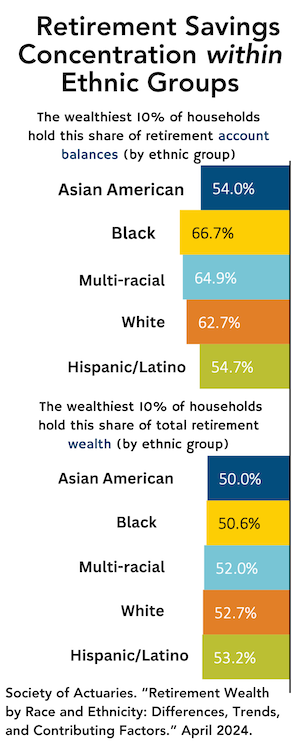Many entrepreneurs are trying to surf the Great American Age Wave, but few have been as closely involved with selling financial products to “seniors”—there’s got to be another word—for as long as Steve Zaleznick has.
Four years ago, the long-time AARP executive started Longevity Alliance, Inc., a private equity-backed, Internet-based insurance product marketing organization that he cobbled together from two early web platforms, Insurance Quote Services and Long-Term Care Quote.
Operating out of headquarters in Washington, D.C. and a call center in the Phoenix suburb of Gilbert, Arizona, Zaleznick and his venture capital backers hope that increasing numbers of aging Boomers will buy immediate annuities, Medicare enhancements, and long-term care insurance (LTCI) from his low-pressure, salaried agents.
“We’re not just moving leads to other people,” Zaleznick told a skeptical inquirer who thought his multi-hued website looked suspiciously like many insurance sales-lead aggregation traps on the web that offer “free quotes” while trawling for names, addresses and phone numbers.
And despite the old saying that insurance is sold, not bought, he’s proving that there’s a viable web-mediated direct market for annuities and LTCI. “I like the idea that people can self-educate,” Zaleznick said. “Obviously, there’s a huge need for clarity and communication in this business.”
Ivy Leaguer goes to AARP
Zaleznick, who is 54, got involved with the senior market before it was cool. Some 25 years ago, he joined the then-American Association of Retired Persons as a young attorney. He had earned a BA in economics at Brown University, then gone on to get a JD degree from Georgetown University Law Center in Washington, D.C., where AARP is based.
After serving as general counsel, he founded and ran AARP Services, Inc., which acts as a marketing intermediary for AARP’s insurance, financial service, healthcare and lifestyle product partners. AARP has relationships with New York Life, The Hartford, Chase and other companies.
Zaleznick left AARP in 2002, but was still determined to do good and do well by marketing directly to older Americans. In 2005 he started his own company, Longevity Alliance Inc., and soon received backing from Kinderhook Industries, a private equity firm in Manhattan that represents $470 million in capital that was founded in 2003.
Longevity Alliance has been built on a foundation of two acquired businesses, both based in the Phoenix area. The first was Insurance Quote, an online insurance and annuities marketing site that was one of several businesses owned by entrepreneur David T. Phillips. That business survives in part as a term life insurance marketing website, iquote.com.
In September 2006, Zaleznick acquired Long-Term Care Quote (ltcq.com), a 10-year-old independent agency in Chandler, Arizona that specialized in direct sales of long-term care insurance, from Robert Davis. The deal included Long-Term Care Quote’s proprietary database and rating system for developing customized quotes and side-by-side comparisons for long-term care insurance.
“Our businesses are divided among long-term care insurance, retiree health insurance, and longevity insurance,” Zaleznick told RIJ. “The public doesn’t lack sufficient choice about these products. But it does lack navigational tools. Most people deal with their situation by not dealing with it. But, in all of these cases, it’s hard to transact without talking to someone.”
A retro look
At first glance, Longevity Alliance’s homepage appears similar to online insurance sites that exist as magnets for leads, which are often sold to commissioned agents who follow up with a high-pressure house call. The purple and orange color scheme is jarring, the photographs of smiling grey-haired couples a bit retro.
But the strategy here seems to be different. According to Tina Jones, the director of operations at Longevity Alliance’s call center in Gilbert, the leads go to one of the company’s phone representatives. While they are insurance licensed, they don’t work on commission.
“All of our agents are contracted and appointed to certain carriers, but as far as compensation goes, they’re salaried employees,” Jones said. “They assign their commissions to the corporation. The consumers out there appreciate that. Otherwise, it’s hard for them to know if the person recommending products is representing their best interests.”
“A lot of our agents come from a single carrier environment, and weren’t satisfied offering one choice. They have a desire to go home feeling like they helped people,” she added. “It’s not for everyone. If you have that aggressive sales mentality, you won’t be interested in our offering.”
About 40 agents work at the call center, along with about ten additional support staff, she said. According to the website, Longevity Alliance sells products issued by Assurant Health, Blue Cross/Blue Shield, CIGNA Medicare Services, Coventry Health Care, Mutual of Omaha, United Healthcare, Aetna, and American National.
Jones said Longevity Alliance also works with Midland National Life, Jackson National Life, Genworth Financial, John Hancock, Mass Mutual and others. Some of the sales are referred to Crump, the insurance marketing organization formerly known as BISYS.
Zaleznick is president and CEO of the company, and even writes a blog at longevitylens.com. Ken Gromacki, the director of sales operations, came to Longevity Alliance from ICMA Retirement Corporation. The chief marketing officer is Darren Gruendel, a Yale University graduate with an MBA from the Kellogg School of Management at Northwestern University. The chairman is Horace Deets, executive director of AARP from 1988 to 2001.
Longevity Alliance is clearly all business. But it evidently has ambitions that go beyond just pushing insurance products, as these thoughtful comments on its website suggest:
“Americans face three primary financial risk categories as they age: health care expense, long-term care expense, and the general risk of outliving one’s assets, ‘longevity risk.’ Each presents a unique problem to solve and each can derail an otherwise sound financial plan. Solving one is a start, but real ‘peace of mind’ can only come when all three have been addressed.”
The question is, can call center reps, even with insurance licensing and experience, create a comprehensive plan?
© 2009 RIJ Publishing. All rights reserved.





